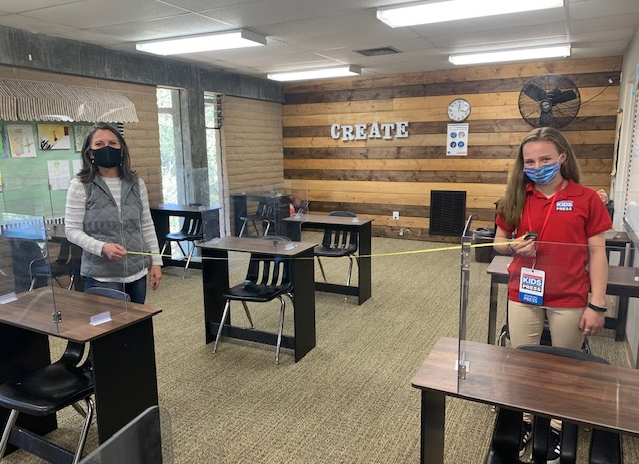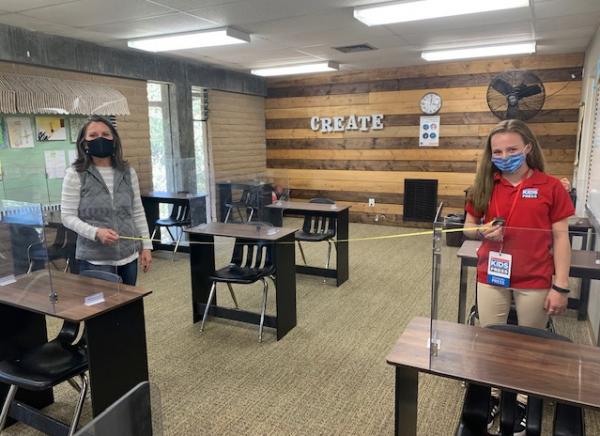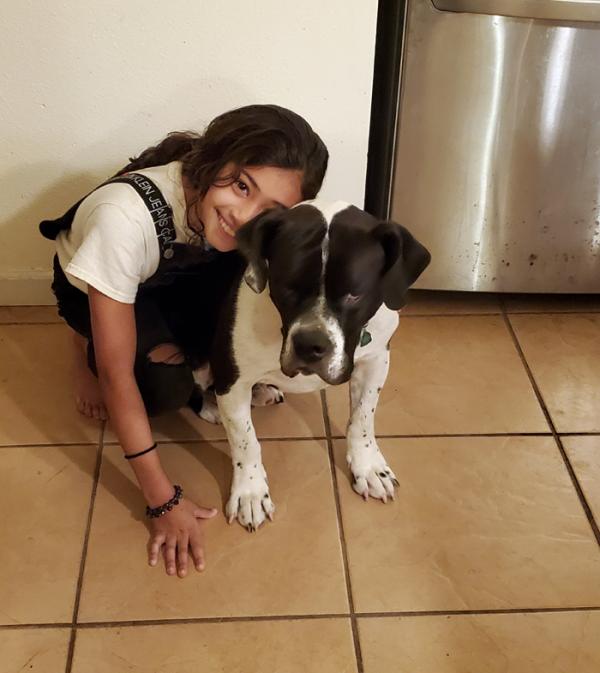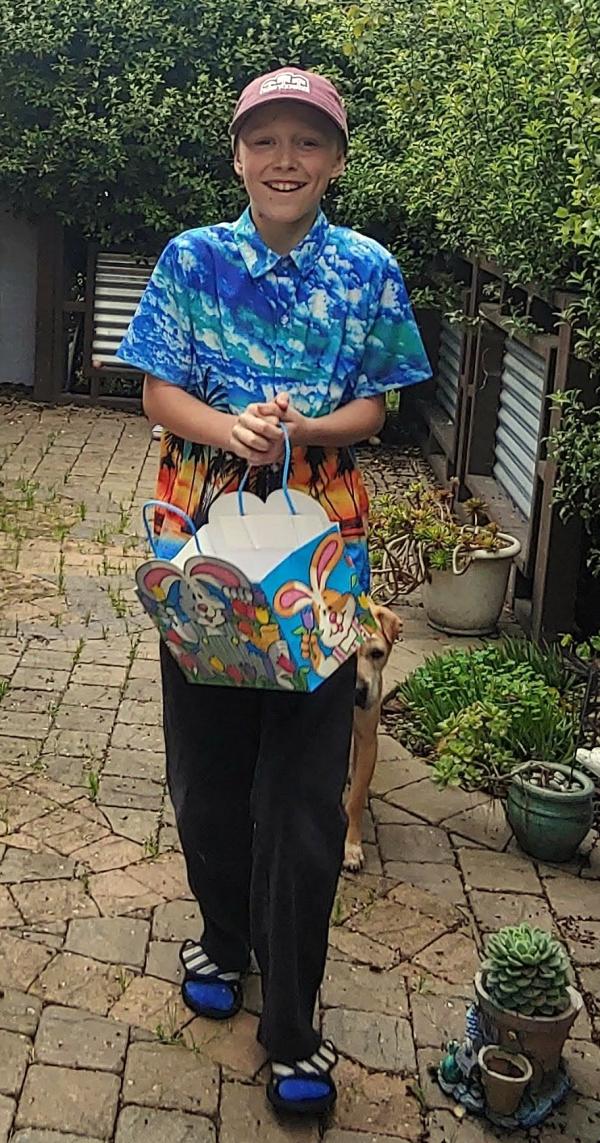KID REPORTERS’ NOTEBOOK
Coping With the Pandemic: One Year Later


Ella and the principal of her school, Meg Imel, observe social distancing guidelines in the classroom.
One year ago, on March 11, 2020, the World Health Organization declared a global pandemic. A contagious virus called COVID-19, first detected in Wuhan, China, was spreading around the world.
Across the United States, cities and towns went into lockdown to help slow the spread of the virus. Soon, everyone was talking about quarantine, PPE’s (personal protective equipment), and antibodies, which can determine your future immunity to the virus. Public health officials began contact tracing, which is the practice of identifying and notifying people who were exposed to individuals infected with COVID-19.
In Santa Cruz County, where I live, the streets and stores were empty. There were few commuters on the highway.
Many people lost their jobs, and many small businesses closed their doors for good. Grocery stores remained open, however, and toilet paper, sugar, flour, rice, and hand sanitizer flew off the shelves. Family gatherings, birthday parties, and restaurant visits were put on hold. We stayed home and waited for cases to decrease.
Most U.S. schools, including mine, switched to remote learning. The change to virtual learning meant not being able to see friends in person. We began to socialize on Houseparty, FaceTime, and other apps.
School lessons taught via Zoom were hard because we couldn’t interact or ask many questions. After a few days of distance learning, my bedroom became my classroom, with my bed as my desk and my dog as my best friend.

“The best thing about being in school is being with my friends,” says TLCS student Daisy Mager.
STRICT SAFETY REQUIREMENTS
In the fall of 2020 in Santa Cruz County, a few private schools re-opened for in-person learning with special permission from government officials. Twin Lakes Christian School (TLCS), which I attend, re-opened for in-person instruction on September 22, 2020, about a month after the official start of the academic year.
“The most challenging aspect of returning to in-person instruction was ensuring the safety of our students and staff,” said Meg Imel, the principal of TLCS.
TLCS hired 18 additional staff members to help meet the requirements set out by the county. Such measures, Imel said, included “staggered drop-off and pick-ups, separating and sanitizing recess and lunch areas, sanitizing classrooms, providing sanitizing stations throughout the campus, installing desk shields, and more.”
At TLCS, all of the facilities, including classrooms, the playground, and gym, are cleaned several times a day with electrostatic misters. With all of the precautions, Imel said, “We’ve had zero transmissions of COVID-19 among students and staff.”

“The thing that makes me feel safe at my school is knowing that we have a brand-new filtration system,” says TLCS student Kylie Masilamoney.
STAYING IN PODS
The TLCS school day has three different start times. This prevents all 379 students from arriving at school at once. Each student is temperature checked, health screened, and given hand sanitizer.
For each grade, there are pods instead of classes, with one teacher and one aide. Each pod has 14-17 students, which is much smaller than a normal class size. Every grade level from kindergarten through sixth went from two classes to three.
About 5% of students at TLCS continue to distance learn. They’re able to Zoom into their classroom and participate virtually in their pod.
In each classroom, desks have been fitted with plastic shields and spaced six feet apart. The students stay in their assigned pods and classroom all day. At breaks and lunch, the pods each have their own part of campus to play and eat lunch. There is no interaction between pods.
The biggest change is having to wear a face mask all day and maintain the six-foot distancing rule. “Mask guidelines require all students and staff to wear masks at all times,” Imel said, “unless eating, drinking, running (while maintaining a six-foot distance), or resting (for kindergarten).” This is difficult to do, especially when playing outside with friends during breaks and recess.
Despite these strict guidelines, students and staff members prefer being back in-person. “We’re passionate about offering in-person instruction,” Imel said. “It gives us great joy to interact with our students.”

“Distance learning was hard,” says TLCS student Josh Couchman.
STUDENTS’ VIEWS
Here is what three TLCS students said about in-person learning:
Daisy Mager, 13, seventh grade
“The best thing about being in school is being with my friends. I get to talk to them and work with them, and we can all just be ourselves again, even though we’re going through a rough time together as a family.”
Josh Couchman, 13, seventh grade
“I prefer in-person school because I’m a more outgoing and social person, so distance learning was hard. Also, I focus better at school. I would get distracted really easily at home, and I think it affected my learning.”
Kylie Masilamoney, 10, fifth grade
“The thing that makes me feel safe at my school is knowing that we have a brand-new filtration system. I know that we are not all stuck inside breathing each other’s air.”
